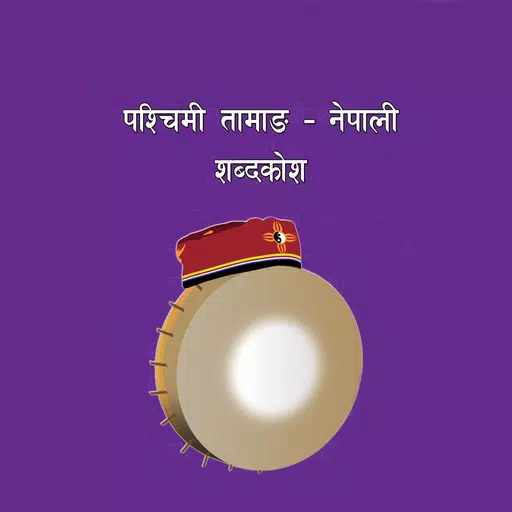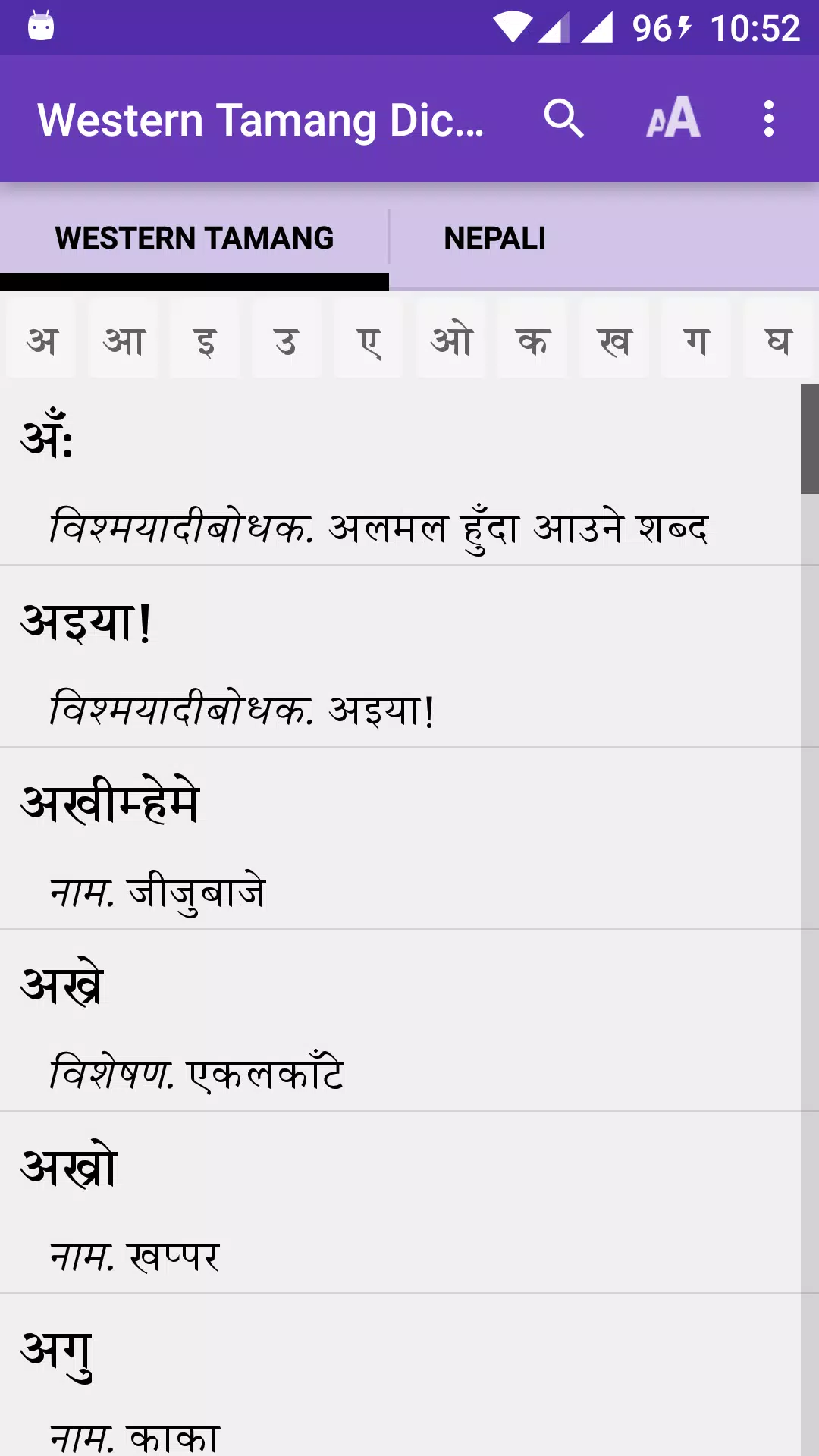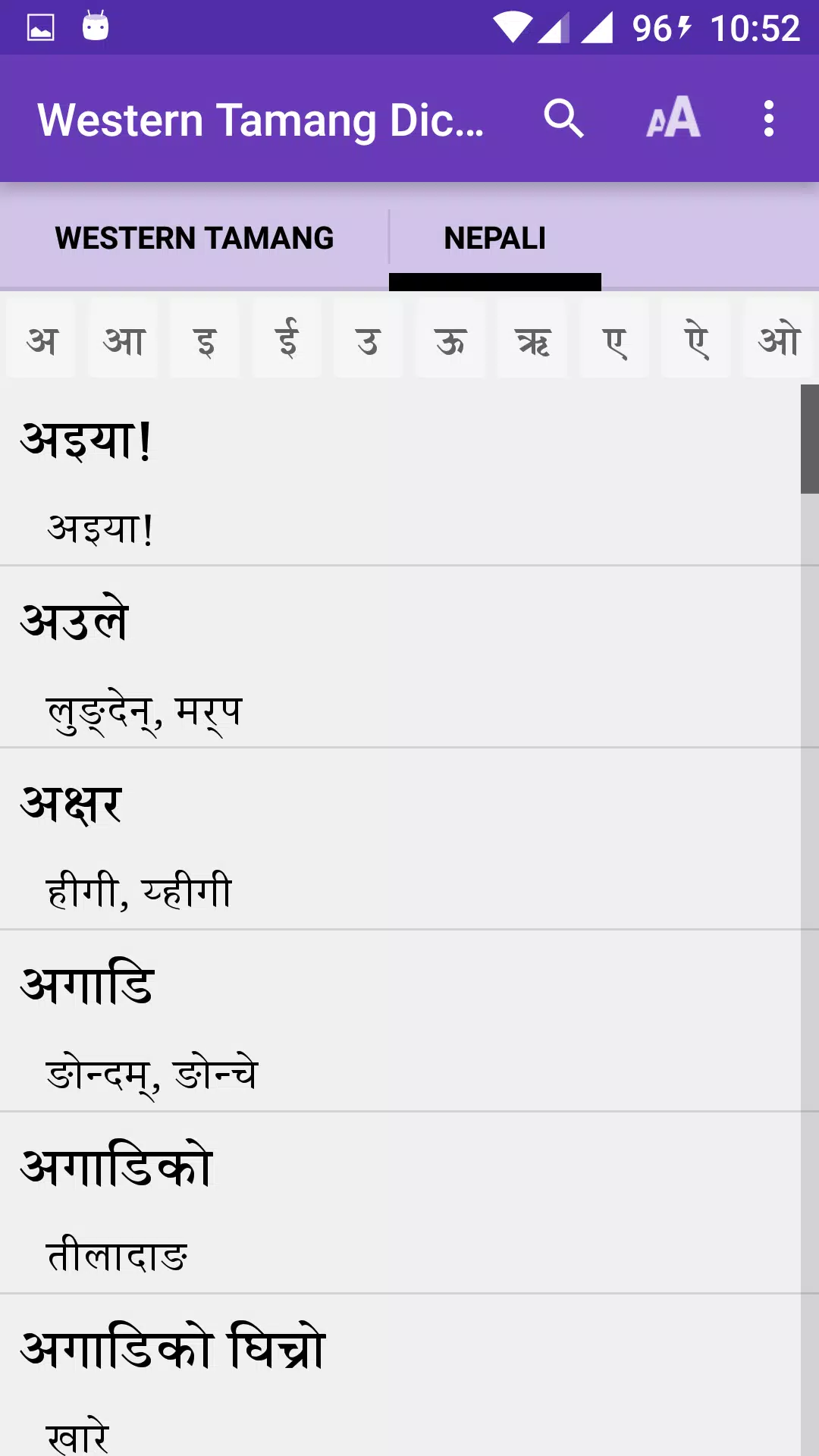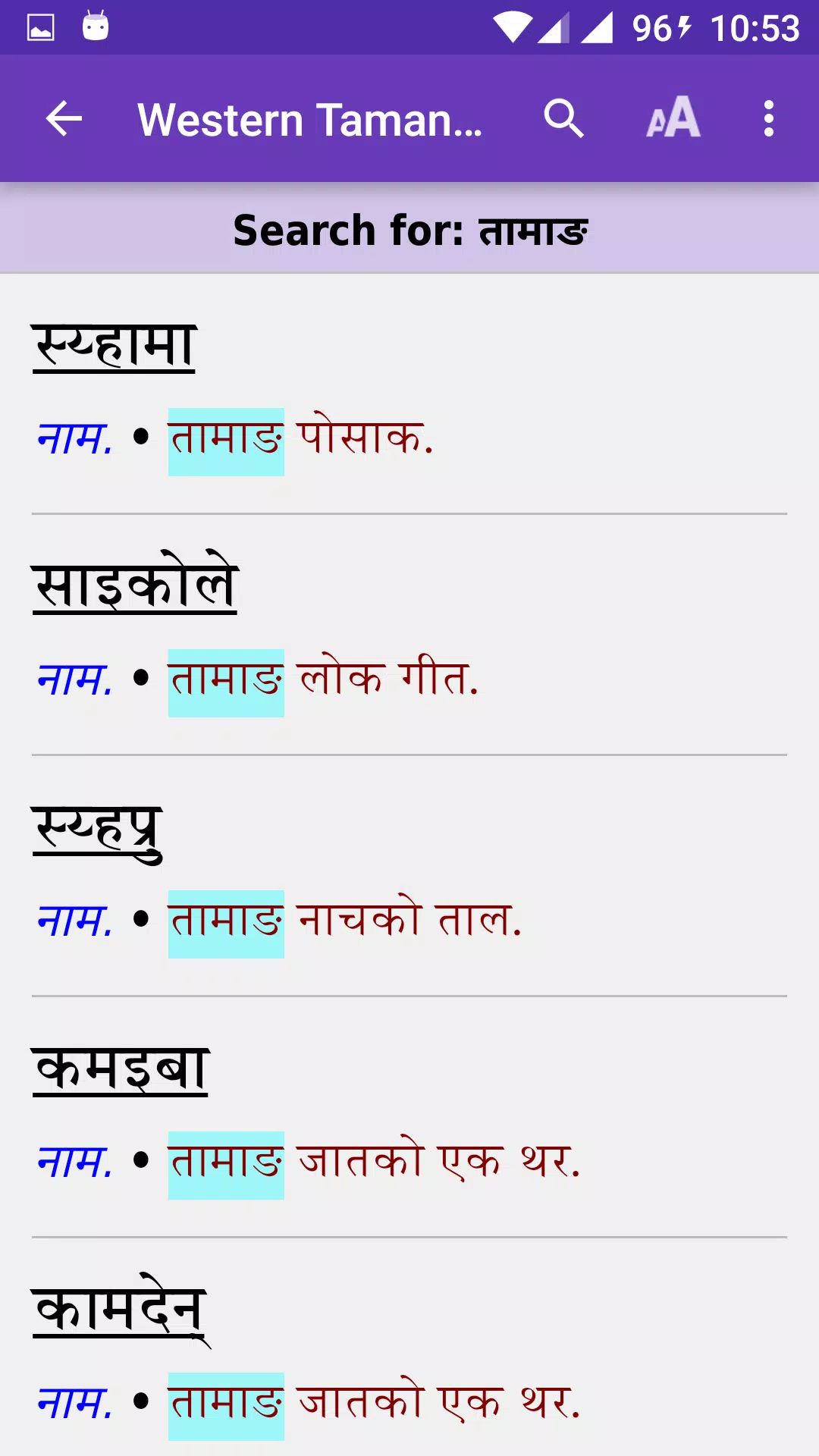Western Tamang Dictionary
| Latest Version | 1.7 | |
| Update | Jan,02/2025 | |
| Developer | SIL International - Nepal | |
| OS | Android 6.0+ | |
| Category | Books & Reference | |
| Size | 13.0 MB | |
| Google PlayStore | |
|
| Tags: | Books & Reference |
This Western Tamang-Nepali dictionary is a collaborative project by the Western Tamang community, encompassing speakers from Rasuwa, Nuwakot, Dhading, Gorkha, Lamjung, Chitawan, and Kanchanpur. It provides Tamang word definitions in Nepali, making it valuable for comparative linguistic research and outsiders alike.
Tamang, a Tibeto-Burman language, boasts the fifth-largest number of speakers in Nepal (5.1% of the population according to the 2011 census). While predominantly spoken around the Kathmandu Valley, Tamang communities exist throughout Nepal. Officially recognized as an indigenous language in Nepal's 2058 VS constitution and further prioritized in subsequent constitutions, its cultural significance is deeply rooted. The "Do:ra song" suggests a Tibetan origin, with initial settlement in the Himalayan region. Unique burial customs reflect this history, with the deceased's head positioned southward, aligning with the cultural understanding of the earth's orientation.
Western Tamang, distinct from Eastern Tamang (spoken east of the Trisuli River), is spoken across several Nepali districts. It's referred to as "Nhurba" or "Nhuppa," in contrast to the Eastern dialect, "Syarba." Sadly, the influence of Nepali, the national language, threatens the continued use of Western Tamang. This dictionary aims to counteract this trend, playing a vital role in preserving and promoting this valuable language.
We welcome feedback and suggestions for future improvements to this dictionary. Your contributions are essential to its continued growth and accuracy.
What's New in Version 1.7
Last updated September 29, 2024
- Updated July 30, 2024
- New Android SDK




